Inside The European Drug Cartel Alliance
-
Handy Easy Email and World News Links WebMail
GoogleSearch INLTV.co.uk YahooMail HotMail GMail - news.sky.com/watch-live New York Post nypost.com YouTube
In 1987, Christy Vincent Kinahan was slapped with a relatively-lean six-year jail sentence, which Irish Sun Crime Editor Stephen Breen believes was crucial to the cartel’s success.
John Gilligan Convicted Irish Gangster

Confessions Of A Crime Boss John Gilligan Convicted Irish Gangster
Through his own words, John Gilligan recounts his days moving up through the criminal underground of the 1970's & 80's in Dublin. In the 1990's John Gilligan was the most successful drug trafficker in the British Isles.
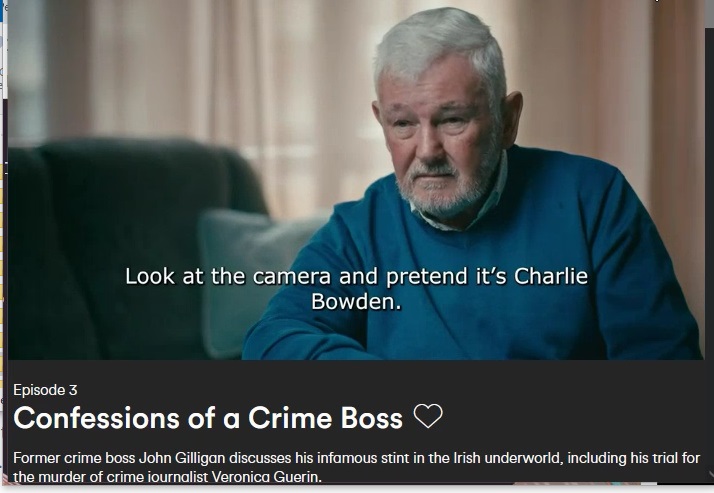
JohnGilligan_CrimeBoss_
Confessions Of John Gilligan Crime Boss Part One
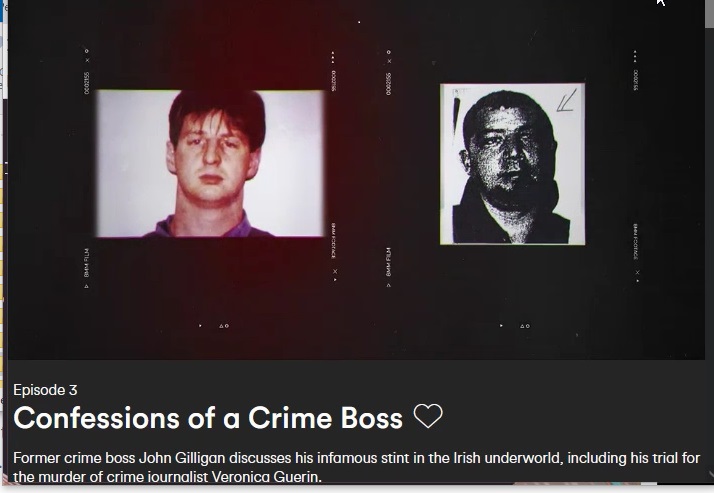
Brian Meehan - Charlie Bowden
Confessions Of John Gilligan Crime Boss Part Two
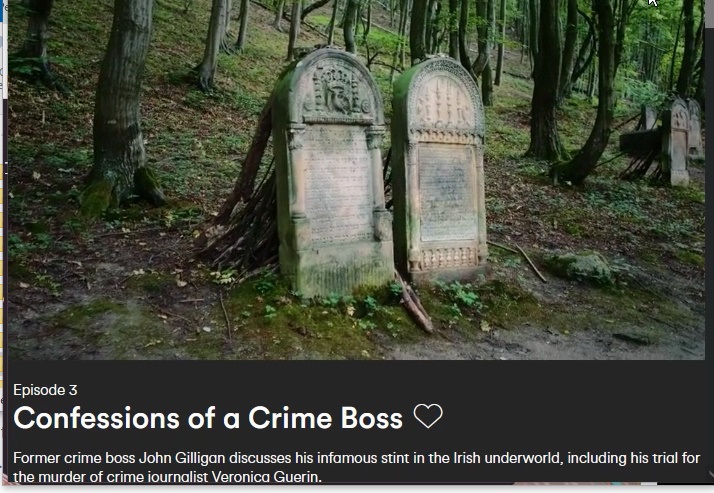
John Gilligan claims there are Guns Buried In Graves in Ireland
Confessions Of John Gilligan Crime Boss Part Three
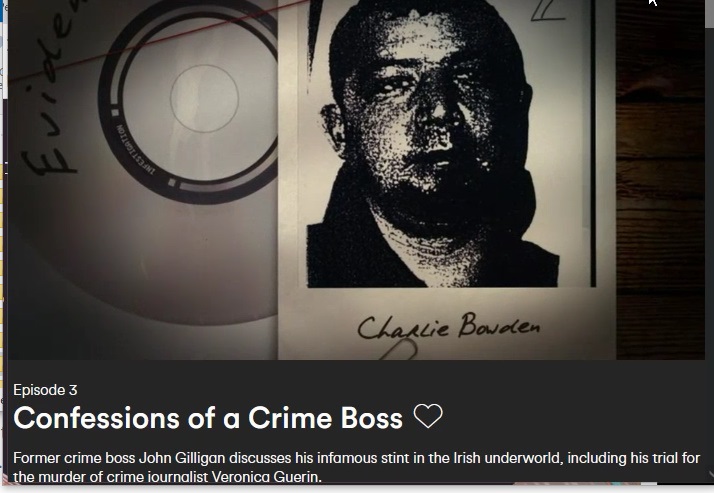
Charlie Bowden
John Gilligan States in a National TV Interview above that Hitman Charlie Bowden was the person that actually shot Veronica Guerin in 1966, from a motor bike ridden by Brian "The Tosser" Meehan
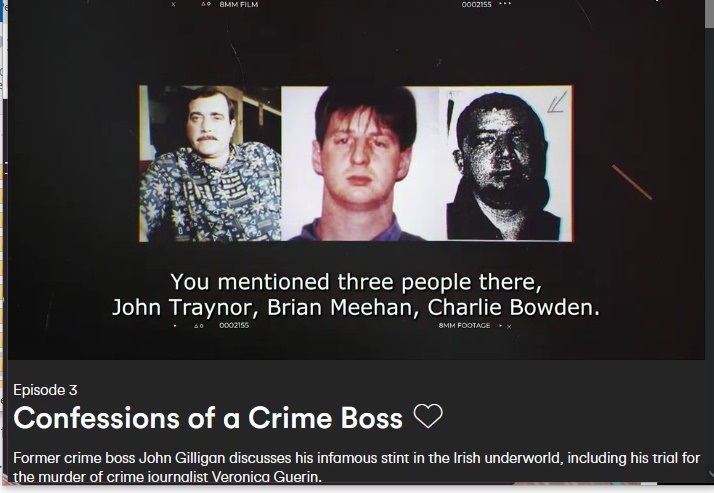
John Traynor, Brian Meehan and Charlie B
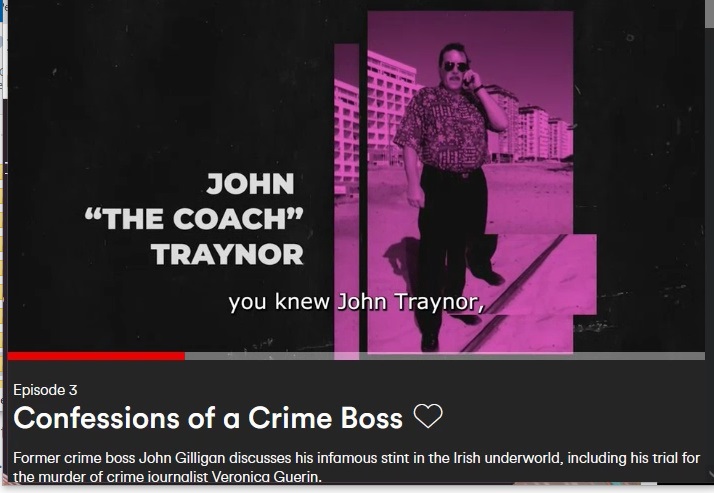
John "The Coach" Traynor
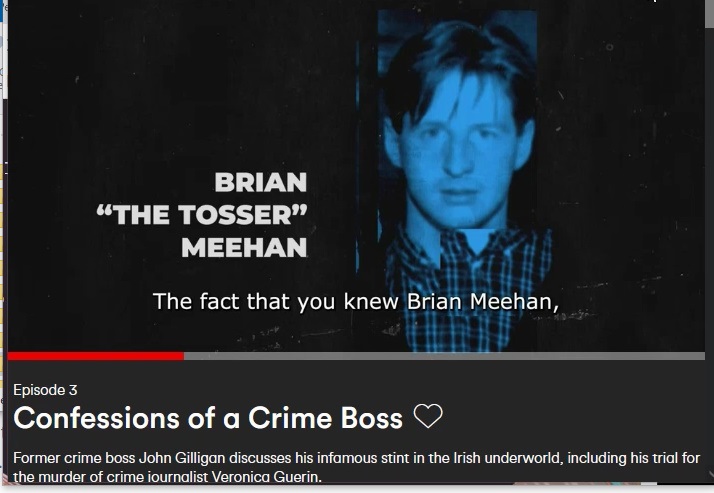
Brian "The Tosser" Meehan
In the 1990’s John Gilligan was the most successful drug trafficker in the British Isles. Growing up in poverty in Ireland, he found comfort in a life of petty crime that would intensify beyond all his expectations. Gilligan’s crimes escalated from bank robberies to cannabis importation and gave him a life of privilege and connections with criminals all over the globe.
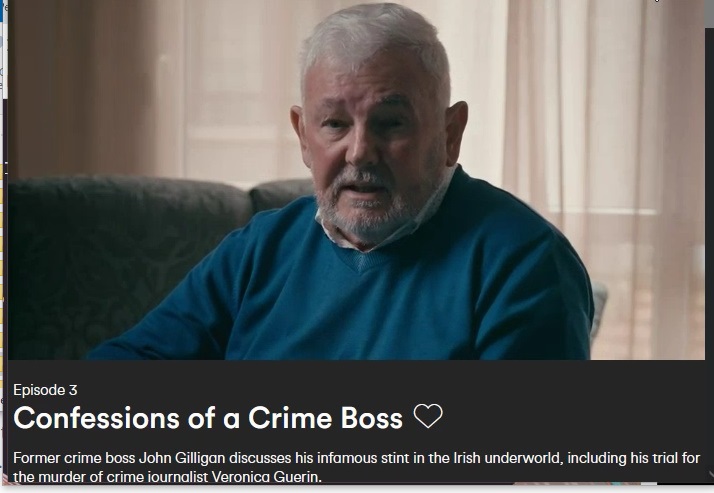
John Gillian Crime Boss
This explosive documentary mini-series, is the product of over forty hours of exclusive one-off interviews with Gilligan, in which he documents his life of crime. Over three gripping hours John Gilligan tells of his background as an armed bank robber, his deep involvement in international money laundering, and how he miraculously survived an assassination attempt. He also speaks frankly about the assassination of Journalist Veronica Guerin, a crime for which he was charged but never convicted.
Confessions of a Crime Boss reveals the rampant gangland crime of late twentieth century Ireland, and the power and influence held by the gangs who controlled the drugs trade during this turbulent time. Most of all it focuses on one man who, at the center of these criminal escapades, would become Ireland’s most notorious Crime Boss.
John Gilligan 'hopping mad' as old pal takes €100,000 from his Spanish bolthole - Irish Mirror Online
John Gilligan has been fleeced of more than €100,000 by one of his closest associates, it has been claimed.
Underworld sources have told the Irish Mirror a former key ally of the pint-sized criminal took the cash from him in his Spanish bolthole in recent weeks – and left the veteran gangster furious.
A source told the Irish Mirror: “He is hopping mad about it.”
Underworld sources have told us the Gilligan associate used the money to buy drugs, adding: “He has done a runner and is spending the cash on heroin.”
Sources said the disappearance of the associate is a hammer blow for Dubliner Gilligan, 70, who had been relying on the man more and more in recent years.
Our source said: “They were close. This has really got to Gilligan. He is beside himself.”
News of his ally’s disappearance comes just weeks before Gilligan – whose gang murdered crime reporter Veronica Guerin in 1996 – heads back to a court in Spain to face drugs charges.
Gilligan, who was acquitted of Ms Guerin’s murder but was jailed for 17 years on cannabis importation charges, is accused of sending drugs to Ireland by post. He stands to be locked up for three years if he is convicted when he appears in court in April in Torrevieja, near Alicante on the Costa Blanca.
The threat of a prison sentence of more than eight years still hangs over Gilligan’s head following the failure to strike a deal late last year that would have reduced the trial to a mere formality.
State prosecutors are also demanding an 18-month prison sentence for unlawful weapons possession for Gilligan after cops found a gun buried in the garden of his expat home in Torrevieja in 2020.
Detectives said when he was arrested in October 2020 the gun was a rare Colt Python .357 Magnum and described it as the “same make and model” as the one used to kill the reporter in an ambush at a red light on the outskirts of Dublin in June 1996.
However, the Irish Mirror later established that the gun was not used to murder Ms Guerin.
Despite that, he is still facing charges over the pistol – as well as for allegedly sending drugs via courier deliveries in boxes containing flip-flops and children’s towels.
Police sources said at the time of
Gilligan’s October 2020 arrest that the raid on the drug baron’s villa crucially took place as he was preparing a delivery to Ireland of marijuana and sleeping pills which heroin addicts use to help them numb pain.
A Spanish National Police spokesman did not name Gilligan in a force statement at the time but said: “Investigators managed to intercept four postal deliveries in Spain in which four kilos of marijuana and 15,000 pills had been hidden.
“The well-known Irish criminal who allegedly headed the organisation was sentenced to 28 years in prison in 2001 in Ireland and served 17 years. Irish investigators linked his organisation to the murder of an Irish journalist.”
In June 2021 after Gilligan was released from prison on bail after his arrest, the Irish Mirror tracked him down to his Spanish bolthole – where he scuttled away from us when he was confronted.
We approached him as he got out of a Black Nissan Micra driven by his son Darren – and told him we wanted to talk to him about the murder, for which he was prosecuted but acquitted.
Gilligan was entering the driveway of the villa when we caught up with him after a four-day surveillance operation in which we repeatedly photographed him enjoying his freedom on the Costa Blanca.
Click Here for INL News Amazon Best Seller Books
 Click Here for INL News Amazon Best Seller Books
Click Here for INL News Amazon Best Seller Books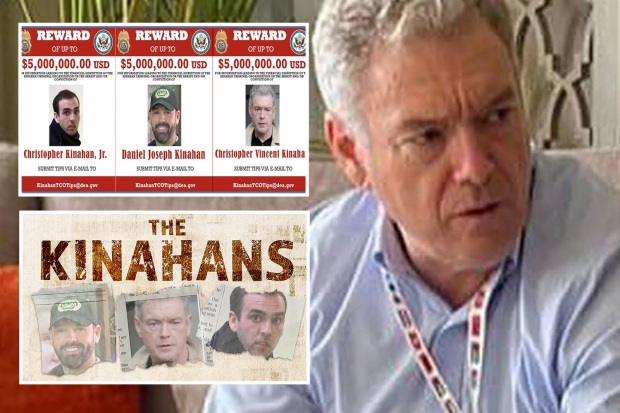
Christy Vincent Kinahan on heroin charges:
Christy Kinahan cartel kingpin turned pale after he
Veronica Guerin
Born 5 July 1959 Dublin, Ireland
Died 26 June 1996 (aged 36)
Naas Dual Carriageway, Newlands Cross, Dublin, Ireland
Cause of death Gunshot wounds
Education Trinity College Dublin
Occupation(s) Accountant, journalist
Years active 1990–1996
Notable credits
Sunday Independent Spouse Graham Turley (m. 1985) Children 1

Monument to Guerin in Dublin Castle gardens
|
VVeronica Guerin Turley (5 July 1959 – 26 June 1996) was an Irish investigative journalist focusing on organized crime in the Republic of Ireland, who was murdered in a contract killing believed to have been ordered by a South Dublin-based drug cartel. Born in Dublin, she was an athlete in school and later played on the Irish national teams for both Association football and basketball. After studying accountancy she ran a public-relations firm for seven years, before working for Fianna Fáil and as an election agent for Seán Haughey. She became a reporter in 1990, writing for the Sunday Business Post and Sunday Tribune. In 1994 she began writing articles about the Irish criminal underworld for the Sunday Independent. In 1996, after pressing charges for assault against major organised crime figure John Gilligan, Guerin was ambushed and fatally shot in her vehicle while waiting at a traffic light. The shooting caused national outrage in Ireland. Investigation into her death led to a number of arrests and convictions.
|
|---|
Early and personal life
The daughter of Christopher and Bernadette, Guerin was nicknamed "Ronnie." She and her four siblings were born and brought up in Artane, Dublin, and attended St.Mary's secondary school in Killester where she excelled in athletics. Besides basketball and camogie, aged 15 she played in the All-Ireland football finals with a slipped disc. She played for both the Ireland women's national basketball team and Republic of Ireland women's national football team, representing the latter in a match against England at Dalymount Park in May 1981.
Guerin studied accountancy at Trinity College Dublin. She married Graham Turley in 1985, and the couple had a son, Cathal (born 1990). She was a supporter of Manchester United football team; her prized possession was a photo of her and Eric Cantona taken on a visit to Old Trafford.
After she graduated, her father employed her at his company; but following his death three years later, she changed professions and started a public relations firm in 1983, which she ran for seven years.
In 1983–84, she served as secretary to the Fianna Fáil group at the New Ireland Forum. She served as Charles Haughey's personal assistant, and became a family friend, taking holidays with his children. In 1987 she served as election agent and party treasurer in Dublin North for Seán Haughey.
PR career: 1983–1990
After she graduated, her father employed her at his company; but following his death three years later, she changed professions and started a public relations firm in 1983, which she ran for seven years.
In 1983–84, she served as secretary to the Fianna Fáil group at the New Ireland Forum. She served as Charles Haughey's personal assistant, and became a family friend, taking holidays with his children. In 1987 she served as election agent and party treasurer in Dublin North for Seán Haughey.
Journalism career: 1990–1996
In 1990, she changed careers again, switching to journalism as a reporter with the Sunday Business Post and Sunday Tribune, working under editor Damien Kiberd. Craving first-hand information, she pursued a story directly to the source with little regard for her personal safety, to engage those she deemed central to a story. This allowed her to build close relationships with both the legitimate authorities, such as the Garda Síochána (police), and the criminals, with both sides respecting her diligence by providing highly detailed information. She also reported on Irish Republican Army activities in the Republic of Ireland.
From 1994 onwards, she began to write about criminals for the Sunday Independent.[2] Using her accountancy knowledge to trace the proceeds of illegal activity, she used street names or pseudonyms for underworld figures to avoid Irish libel laws.
When she began to cover drug dealers and gained information from convicted drugs criminal John Traynor, she received numerous death threats. The first violence against her occurred in October 1994, when two shots were fired into her home after her story on murdered crime kingpin Martin Cahill was published. Guerin dismissed the "warning". The day after writing an article on Gerry "The Monk" Hutch, on 30 January 1995, she answered her doorbell to a man pointing a revolver at her head, but the gunman missed and shot her in the leg.[citation needed] Regardless, she vowed to continue her investigations. Independent Newspapers installed a security system to protect her, and the Gardaí gave her a 24-hour escort; however, she did not approve of this, saying that it hampered her work.
On 13 September 1995, convicted criminal John Gilligan, Traynor's boss, attacked her when she confronted him about his lavish lifestyle with no source of income.[9] He later called her at home and threatened to kidnap and rape her son, and kill her if she wrote anything about him.
Guerin received the International Press Freedom Award from the Committee to Protect Journalists in December 1995.
Murder
On the evening of 25 June 1996, Gilligan drug gang members Charles Bowden, Brian Meehan, Kieran 'Muscles' Concannon, Peter Mitchell and Paul Ward met at their distribution premises on the Greenmount Industrial Estate. Bowden, the gang's distributor and ammunition quartermaster, supplied the three with a Colt Python revolver loaded with .357 Magnum semiwadcutter bullets.[11][dead link] On 26 June 1996, while driving her red Opel Calibra, Guerin stopped at a red traffic light on the Naas Dual Carriageway near Newlands Cross, on the outskirts of Dublin, unaware she was being followed. She was then shot six times, fatally, by one of two men sitting on a motorcycle.[12]
About an hour after Guerin was murdered, a meeting took place in Moore Street, Dublin, between Bowden, Meehan, and Mitchell. Bowden later denied under oath in court that the purpose of the meeting was the disposal of the weapon but rather that it was an excuse to appear in a public setting to place them away from the incident.[11]
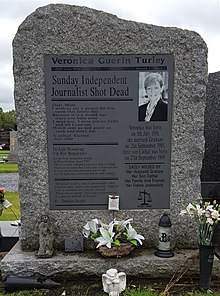
At the time of her murder, Traynor was seeking a High Court order against Guerin to prevent her from publishing a book about his involvement in organised crime.[13] Guerin was killed two days before she was due to speak at a Freedom Forum conference in London. The topic of her segment was "Dying to Tell the Story: Journalists at Risk."
Her funeral service, on 29 June 1996 at a church in Dublin Airport, was attended by Ireland's Taoiseach John Bruton, and the head of the armed forces. It was covered live by Raidió Teilifís Éireann. On 4 July, labour unions across Ireland called for a moment of silence in her memory, which was duly observed by people around the country. Guerin is buried in Dardistown Cemetery, County Dublin.
Aftermath
Guerin's murder caused outrage, and Taoiseach John Bruton called it "an attack on democracy."
The Oireachtas, the Irish parliament, realised the potential of using tax enforcement laws as a means of deterring and punishing criminals. Within a week of her murder, it enacted the Proceeds of Crime Act 1996 and the Criminal Assets Bureau Act 1996, so that assets purchased with money obtained through crime could be seized by the government. This led to the formation of the Criminal Assets Bureau (CAB).
After the murder of Guerin, Bowden was arrested as were the other members of Gilligan's gang who were still in Ireland. In an agreement with the Attorney General of Ireland, Bowden agreed to turn state's witness, and become the first person to enter the Republic's Witness Security Programme. Granted immunity from prosecution for the murder of Guerin, he was the only witness to give evidence against all four drug gang members at their trials in the Special Criminal Court: Patrick Holland, Paul "Hippo" Ward, Brian Meehan and John Gilligan. The investigation into Guerin's death resulted in over 150 other arrests and convictions, as well as seizures of drugs and arms. Drug crime in Ireland dropped 15 percent in the following 12 months. Four months after Guerin's murder, in October 1996, there was a sharp decline in the sex ratio at birth in Ireland, which fell to 0.5 from an anticipated value of more than 0.51.
In 1997, while acting as a Garda witness, Bowden named Patrick "Dutchy" Holland in court as the man he supplied the gun to, and hence suspected of shooting Guerin. Holland was never convicted of the murder, and he denied the accusation until his death in June 2009 while in prison in the UK.
In November 1998, after evidence from Bowden and others, Paul "Hippo" Ward was convicted of the murder and sentenced to life in prison as an accomplice, because he had disposed of the murder weapon and the motorbike. This conviction was later overturned on appeal.
Brian Meehan fled to Amsterdam with Traynor (who later escaped to Portugal). After the court dismissed additional evidence from Bowden, Meehan was convicted on the testimony of gang member turned state's witness Russell Warren, who had followed Guerin's movements in the hours before the murder, and then called Meehan on a mobile phone with the details.
Meehan was convicted of murdering Guerin, and sentenced to life imprisonment.[20] He is the only individual serving a life sentence for his role in the murder.
John Gilligan left Ireland the day before Guerin was murdered, on a flight to Amsterdam. He was arrested 12 months later in the United Kingdom trying to board a flight for Amsterdam after a routine search of his baggage revealed $500,000 in cash. Claiming it was the proceeds of gambling, he was charged with money laundering. After a three-year legal battle, he was extradited to Ireland on 3 February 2000. Tried and acquitted of Guerin's murder, he was later convicted of importing 20 tonnes of cannabis and sentenced to 28 years in prison, reduced to 20 years on appeal.
Pursued by CAB, in January 2008, Gilligan made a court appearance in an attempt to stop the Irish State from selling off his assets. He accused Traynor of having ordered Guerin's murder without his permission. Despite the presiding judge's attempt to silence Gilligan, he continued to blame a botched Gardaí investigation and planted evidence as the reason for his current imprisonment. Traynor had fled to Portugal after Guerin's murder, and having been on the run from British authorities since 1992, resided mainly in Spain and the Netherlands from 1996 onwards. After a failed extradition from the Netherlands in 1997, which brought Meehan back to Ireland, in 2010 Traynor was arrested after a joint UK SOCA/Regiokorpsen operation in Amsterdam.
Traynor, as of 2013, was living in Kent, England after serving time in an English prison. Traynor passed away in 2021 of cancer.
Turley remarried in 2011. Guerin and Turley's son, Cathal Turley, relocated to Dubai and, as of 2021, manages an Irish pub at the Dubai World Trade Centre.
Memorials and legacy
Gary Webb in His Own Words (2002) -
CIA Cocaine Dark Alliance
Inside the European Drug Cartel Alliance P2
Kill The Messenger - Mike Levine - GaryWebb
The Big White Lie - Dark Alliance CIA drug cartel
CIA-LAPD's Involvement In the Illegal Drug Trade
talk by Former Los Angeles Drug Investigator Mike Rupert Part 1
Rise of the Irish Kinahan Cartel
#
Ireland Drug Cartel Documentary Part2
Featuring Christy Vincent Kinahan
Mr Blakey Says he Does Not Trust The CIA Part A
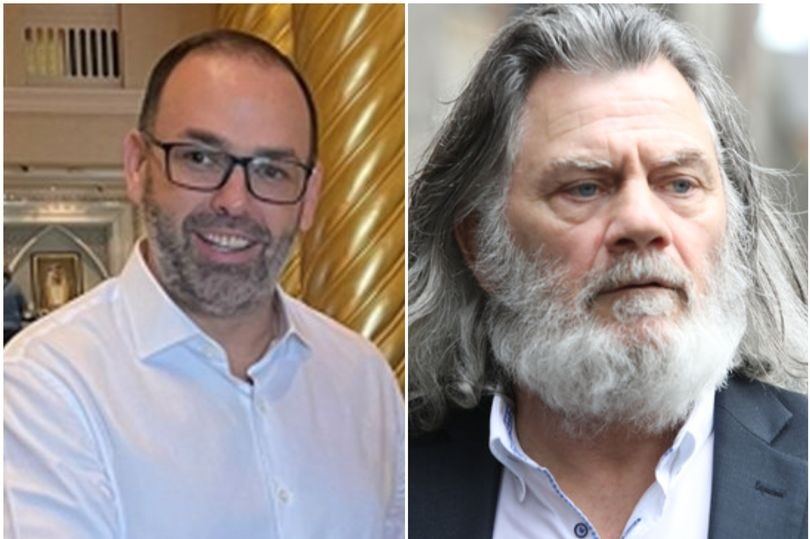
Daniel Kinahan the boss of the international Kinahan Transnational Criminal Organisation (KTCO) -left
and Gerry Hutch-right...

Christy Vincent Kinahan on heroin charges:
Christy Kinahan cartel kingpin turned pale after he
Inside Kinahan cartel rise & bitter revenge lust – and what Christy Kinahan told gardai when he was caught red-handed
In 1987, Christy Vincent Kinahan was slapped with a relatively-lean six-year jail sentence, which Irish Sun Crime Editor Stephen Breen believes was crucial to the cartel’s success.
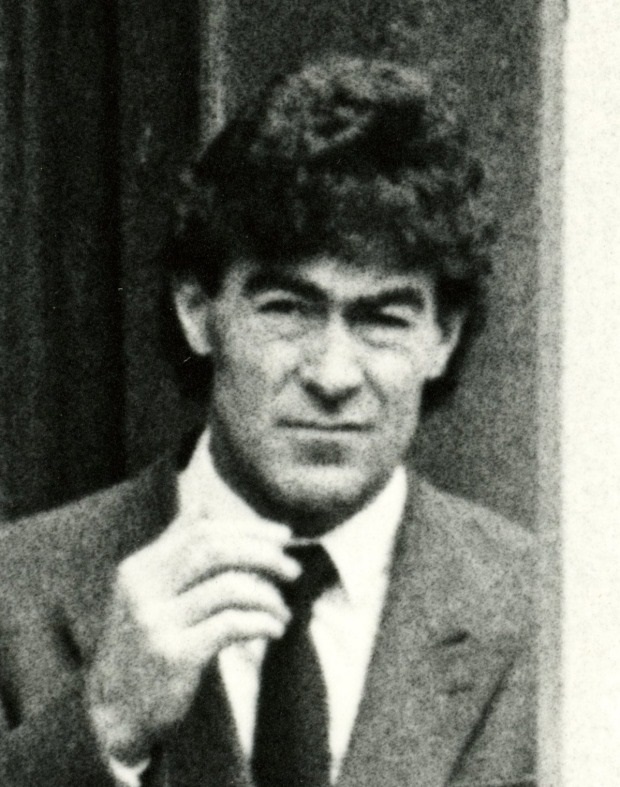
Following in the footsteps of notorious Dublin heroin peddler Larry Dunne (pictured above), Christy Vincent Kinahan set himself up in Fairview in a quiet apartment block to peddler heroin in Dublin
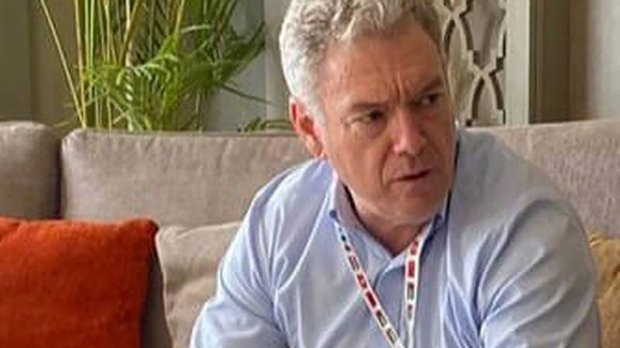
Christy Vincent Kinahan
The retired Garda responsible for nailing Christy Kinahan on heroin charges has told how Christy Kinahan the cartel kingpin turned pale after he was caught red-handed

Former Garda Assistant Commission
"From my recollection, when he looked at me, he went pale. And he said, ‘I’m as sick as a parrot.’” While he initially admitted to being responsible for the drugs haul, Christy changed his tune when he was brought before the courts and blamed an Algerian accomplice, whilst also claiming he himself was struggling with addiction. In 1987, he was slapped with a relatively-lean six-year jail sentence, which Irish Sun Crime Editor Stephen Breen believes was crucial to the cartel’s success. He said: “If he had been given a longer custodial sentence, it would have kept him off the streets a lot longer and therefore would have curtailed his further advancement into the world of drugs.
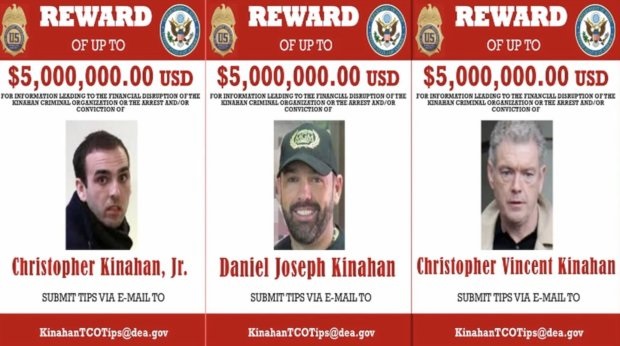
In April 2022, the Kinahan trio were officially targeted by the United States Department of the Treasury
A Man known as Flat Cap, running from Regency Hotel on 5thFeb 2016 after execution of Kinahan Gang Member David Burn
Irelands Deadliest Gang War Hutch v Kinahan P1
Ted Gunderson Interview with Beau Abbott
CIA Involvement In the Illegal Cocaine Drug Trade
Irelands Deadliest Gang War Hutch v Kinahan P2
Gary Webb in His Own Words (2002) -
CIA Cocaine Dark Alliance
Irelands Deadliest Gang War Hutch v Kinahan P2A
CIA Drug Running Mike Rupert P2 of 11
CIA Drug Running Mike Rupert P3 of 11
CIA Drug Running Mike Rupert P4 of 11
CIA Drug Running Mike Rupert P5 of 11
CIA Drug Running Mike Rupert P6 of 11
CIA Drug Running Mike Rupert P7 of 11
CIAs Nugan Hand Bank P1
Nugan Hand Bank CIA Involvement P2
CIA guns Drugs Fraud Golden Triangle No.30
CIA Drug Trafficking And American Politics The Political Economy Of War
CIA Nugan Hand Partying Falcon's Trip The Rio Grande And The Meditteranean Connection (1)
CIA Nugan Hand Partying Falcon's Trip The Rio Grande And The Meditteranean Connection (2)
https://time.com/3482909/this-
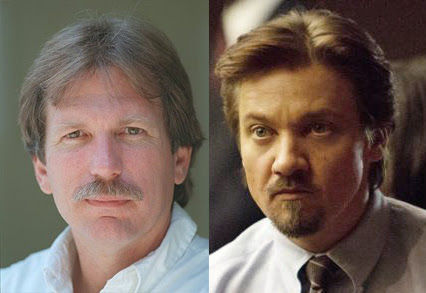
From Left: Late journalist Gary Webb, Actor Jeremy Renner in 'Kill the Messenger
In a scene from the new movie Kill the Messenger, investigative reporter Gary Webb (played by Jeremy Renner) says that he doesn’t believe in conspiracy theories. He does, however, believe in real conspiracies: “If I believe it, there’s nothing ‘theory’ about it.” The true story on which the movie is based, however, makes it clear that it’s not always obvious what’s a theory and what’s the truth.
It started when Webb wrote a series of three articles for the San Jose Mercury News in 1996 dubbed “Dark Alliance.” In his report, Webb — who had won a Pulitzer in 1989 for a different story — claimed that the CIA was partly responsible for bringing crack cocaine to the United States in the 1980s.
Webb conducted a year-long investigation during which he discovered that a San Francisco-based drug ring, which had ties to a CIA-sponsored Nicaraguan contra group called the FDN, sold cocaine to a dealer in South Central Los Angeles. The millions of dollars made from those sales were later used to fund a secret war against the leftist Sandinista regime. In short, Webb accused the CIA of being complicit in getting thousands of poor African-Americans addicted to crack in order to fund rebels in Central America.
The story attracted hundreds of thousands of readers to the newspaper’s site at a time when “going viral” was still a twinkle in the Internet’s eye. It was accompanied by a heavy-handed picture of a man smoking crack under the CIA seal.
As word about the story spread through the Internet, TV and radio, politicians took up Webb’s cause. Representative Maxine Waters, a congresswoman for South Central Los Angeles — the heart of the drug wars — requested both federal and congressional inquiries into the role that the U.S. government played in bringing cocaine into her community.
But many dismissed Webb’s reporting as a conspiracy theory. “Even sources who are routinely skeptical of the official line on the contras agree that the idea that the agency was behind drug smuggling by the contras is fantasy,” journalist Eliane Shannon, who covered the war on drugs, told TIME shortly after the Mercury New ran the articles. The New York Times, Washington Post and Los Angeles Times all ran their own investigations that disputed many points in Webb’s story — though all three of those pieces had their own reporting problems, according to TIME’s Jack E. White.
MI6 Are The Lords Of The Global Drug Trade
International Politics
Commentary by James Casbolt, Former MI6 Agent
2 May 200
Always treat the International Drug Trade and Drug Money Laundering as actual Terrorist Acts
http://iraqwar.mirror-world. ru/article/126995
MI6 (w. Mossad,CIA) Are The Lords Of The Global Drug Trade
By: Crack_Smoke_Republican on: 05.05.2007 [21:31 ] (718 reads)
GaryWebbLinkedCIAToCrackEpidem
GaryWebbLinkedCIAToCrackEpidem
" ... We don't grow cocaine in Black Gettos of America ...."
GaryWebbLinkedCIAToCrackEpidem
MI6 Are The Lords Of The Global Drug Trade
International Politics
Commentary by James Casbolt, Former MI6 Agent
2 May 2007
It may be a revelation to many people that the global drug trade is controlled and run by the intelligence agencies. In this global drug trade British intelligence reigns supreme. As intelligence insiders know MI5 and MI6 control many of the other intelligence agencies in the world (CIA, MOSSAD etc) in a vast web of intrigue and corruption that has its global power base in the city of London, the square mile.
My name is James Casbolt and I worked for MI6 in 'black ops' cocaine trafficking with the IRA and MOSSAD in London and Brighton between 1995 and 1999. My father Peter Casbolt was also MI6 and worked with the CIA and mafia in Rome, trafficking cocaine into Britain.
My experience was that the distinctions of all these groups became blurred until in the end we were all one international group working together for the same goals. We were puppets who had our strings pulled by global puppet masters based in the city of London. Most levels of the intelligence agencies are not loyal to the people of the country they are based in and see themselves as 'super national'. It had been proved beyond a shadow of a doubt that the CIA has been bringing in most of the drugs into America for the last fifty years (see ex LAPD officer Michael Rupert's 'From the wilderness' website for proof).
The CIA operates under orders from British intelligence and was created by British intelligence in 1947. The CIA today is still loyal to the international bankers based in the city of London and the global elite aristocratic families like the Rothchilds and the Windsor's. Since it was first started, MI6 has always brought drugs into Britain. They do not bring 'some' of the drugs into Britain but I would estimate MI6 bring in around ninety percent of the drugs in. They do this by pulling the strings of many organised crime and terrorist groups and these groups like the IRA are full of MI6 agents.
MI6 bring in heroin from the middle east, cocaine from south America and cannabis from morocco as well as other places. British intelligence also designed and created the drug LSD in the 1950's through places like the Tavistock Institute in London. By the 1960's MI5, MI6 and the CIA were using LSD as a weapon against the angry protestors of the sixties and turned them into 'flower children' who were too tripped out to organise a revolution. Dr Timothy Leary the LSD guru of the sixties was a CIA puppet. Funds and drugs for Leary's research came from the CIA and Leary says that Cord Meyer, the CIA agent in charge of funding the sixties LSD counter culture has "helped me to understand my political cultural role more clearly".
In 1998, I was sent 3000 LSD doses on blotting paper by MI5 with pictures of the European union flag on them. The MI5 man who sent them told my father this was a government 'signature' and this LSD was called 'Europa'.
This global drugs trade controlled by British intelligence is worth at least 500 billion a year. This is more than the global oil trade and the economy in Britain and America is totally dependent on this drug money.
Mafia crime boss John Gotti exposed the situation when asked in court if he was involved in drug trafficking. He replied"No we can't compete with the government".
I believe this was only a half truth because the mafia and the CIA are the same group at the upper levels.
In Britain, the MI6 drug money is laundered through the Bank of England, Barclays Bank and other household name companies.
The drug money is passed from account to account until its origins are lost in a huge web of transactions. The drug money comes out 'cleaner' but not totally clean.
Diamonds are then bought with this money from the corrupt diamond business families like the Oppenheimers. These diamonds are then sold and the drug money is clean. MI6 and the CIA are also responsible for the crack cocaine epidemic in Britain and America. In 1978, MI6 and the CIA were in south America researching the effects of the natives smoking 'basuco' cocaine paste. This has the same effect as crack cocaine. They saw that the strength and addiction potential was far greater than ordinary cocaine and created crack cocaine from the basuco formula. MI6 and the CIA then flooded Britain and America with crack. Two years later, in 1980, Britain and America were starting to see the first signs of the crack cocaine epidemic on the streets.
On August 23, 1987, in a rural community south of Little Rock in America, two teenage boys named Kevin Ives and Don Henry were murdered and dismembered after witnessing a CIA cocaine drop that was part of a CIA drug trafficking operation based at a small airport in Mena, Arkansas. Bill Clinton was the governor of Arkansas at the time. Bill Clinton was involved with the CIA at this time and $100 million worth of cocaine was coming through the Mena, Arkansas airport each month. For proof see the books 'Compromise' and 'Dope Inc'.
On my father's international MI6 drug runs, whatever fell off the back of the lorry so to speak he would keep and we would sell it in Britain. As long as my father was meeting the speedboats from Morocco in the Costa del Sol and then moving the lorry loads of cannabis through their MI6, IRA lorry business into Britain every month, British intelligence were happy. As long as my father was moving shipments of cocaine out of Rome every month, MI5 and MI6 were happy. If my father kept a bit to sell himself no one cared because there was enough drugs and money to go round in this 500 billion a year global drugs trade.
The ones who were really paying were the people addicted. Who were paying with suffering. But karma always catches up and both myself and my father became addicted to heroin in later years and my father died addicted, and poor in prison under very strange circumstances. Today, I am clean and drug-free and wish to help stop the untold suffering this global drugs trade causes.
The intelligence agencies have always used addictive drugs as a weapon against the masses to bring in their long term plan for a one world government, a one world police force designed to be NATO and a micro chipped population known as the New World Order. As the population is in a drug or alcohol-induced trance watching 'Coronation Street', the new world order is being crept in behind them. To properly expose this global intelligence run drugs trade we need to expose the key players in this area:...
Continue reading for "the names" below...
1. Tibor Rosenbaum — a MOSSAD agent and head of the Geneva based Banque du Credit international. This bank was the forerunner to the notorious Bank of Credit and Commerce international (BCCI) which is a major intelligence drug money laundering bank. 'Life' magazine exposed Rosenbaum's bank as a money launderer for the Meyer Lansky American organised crime family and Tibor Rosenbaum funded and supported 'Permindex' the MI6 assassination unit which was at the heart of the John F. Kennedy assassination.
2. Robert Vesco — sponsored by the Swiss branch of the Rothchilds and part of the American connection to the Medellin drug cartel in Columbia.
3. Sir Francis de Guingand — former head of British intelligence, now living in south Africa (and every head of MI5 and MI6 has been involved in the drug world before and after him).
4. Henry Keswick — chairman of Jardine Matheson which is one of the biggest drug trafficking operations in the world. His brother John Keswick is chairman of the bank of England.
5. Sir Martin Wakefield Jacomb — Bank of England director from 1987 to 1995, Barclays Bank Deputy Chairman in 1985, Telegraph newspapers director in 1986 (This is the reason why this can of worms doesn't get out in the mainstream media. The people who are perpetrating these crimes control most of the mainstream media. In America former director of the CIA William Casey is head of the council of the media network ABC. Many insiders refer to ABC as 'The CIA network.)
6. George Bush, Snr. — former President and former head of the CIA and America's leading drug baron who has fronted more wars on drugs than any other president, which in reality is just a method to eliminate competition. A whole book could be written on George Bush's involvement in the global drug trade but it is well-covered in the book 'Dark Alliance' by investigative journalist Gary Webb. Gary Webb was found dead with two gunshot wounds to the back of his head with a revolver. The case was declared a 'suicide'. You figure that out. Gary Webb as well as myself and other investigators, found that much of this 'black ops' drug money is being used to fund projects classified above top secret. These projects include the building and maintaining of deep level underground bases in Dulce in New Mexico, Pine gap in Australia, Snowy mountains in Australia, The Nyala range in Africa, west of Kindu in Africa, next to the Libyan border in Egypt, Mount Blanc in Switzerland, Narvik in Scandinavia, Gottland island in Sweden and many other places around the world (more about these underground bases in my next issue).
The information on this global drugs trade run by the intelligence agencies desperately needs to get out on a large scale. Any information, comments or feedback to help me with my work would be greatly welcomed.
One thing is true... by gmmonko on 06.05.2007
...London and it's vast finance industry is the world largest money laundry machine.
Imagine a state becomes a criminal institutions and pretends to be justified by it's voters.
We need to introduce the fourth power the people, otherwise we have no stake
but the money goes higher up to royalties! by CANUKISTAN_VIEW on 06.05.2007
The MI6, Mosad and CIA are just the mules that do the work BUT THE MONEY GOES TO ROYAL CEFFERS and to the Bush clan.
The problem with USA people now IS THAT THEY LOST 100% THEIR FREEDOM TO THE POINT THAT THEY ARE SLAVES TO THEIR DEBT AND PAY CHEQUE!
They have no voice, no say, no thinking, no intelligent conversations or discussions. Because if they do THEY WILL LOSE THEIR JOB and therefore they will be in the black list of FBI. Their career will be over.
Long time ago I posted the concept of SLAVERY INDEX related to freedom of thinking. If you have deep pockets, you are at your own and can care less about conforming. Rothschild said if he can control the money he can care less about the law.
On the other hand, if you have nothing, then there is nothing more than you can lose. In fact biggest changes in human thinking seem to always come from clean-pocket people like Christ, Gandhi, and many others.
The other interesting group is the gypsies; they are no where in the tax radar and this is why Hitler killed them massively. Native people also are free to think because they are quite out of the consumer vicious circle. They have their own micro economy and a bartering system therefore they can care less about scam currencies. The problem for these societies though is that they do not have enough gun to defend their way of life.
In between these two extremes are those who must work to make a living by renting themselves out and therefore they must compromise their freedom by conforming to rules: starting with dressing code, behavior code, social style code and evolving into a complete surrender of your own social and political dreams and your own soul if you end up in the army, CIA, FBI! Therefore, as the
James Casbolt- St Ives, Cornwall-02/5/07
E-mail This email address is being protected from spambots. You need JavaScript enabled to view it.
http://www.friendsofliberty. com/modules.php?name=News& file=article&sid=3117
Large Picture:
The CIA’s Paul Helliwell with the CIA’s Michael Hand (mid) and Frank Nugan (Right) of the Nugan Hand Bank a laundromat for CA heroin Profits.
Small Picture Left:
Former CIA director, vice president, and chief U.S. drug trafficking “fighter! George H.W, Bus with Panama’s Noriega, a decade long CIA asset and Medelli Cartel-allied cocaine exporter to the U.S until be became too much of a liability in 1989
Small Picture Right:
Seizure in Mexica of cartel weapons and drugs
A History of CIA Drug Trafficking:
How Drug Cartels and Drug-Dealing Death Squads have been the CIA's Best Friends For Many Decades
By Joel van der Reiden 19th August 2020
From left to right:
John Hull, Barry Seal, Adolfo Calero, Colonel Enrique Bermudes, and Manuel Noriega with Mike Haran
https://isgp-studies.com/cia-heroin-and-cocaine-drug-trafficking#intro
The global drug trade is controlled and run by the intelligence agencies CIA Mosaad MI5- MI6
James Casbolt has worked for MI6 'black ops' cocaine trafficking IRA Mossad – London & Brighton
A MAN HAS appeared in court charged with drugs offences, as part of a Garda operation targeting organised criminal activity in the Limerick region yesterday.
Michael Kalinowski, 36, with an address at Clonunion Cottage, Adare, Co Limerick, appeared before Limerick District Court, and was charged with one count of possession of almost €80,000 worth of suspected drugs, and one count of simple possession.
Kalinowski, a Polish national, was provided with a interpreter during the hearing before Judge Paul Kelly, President of the District Court.
Kalinowski is accused of possession of €65,000 worth of amphetamine tablets and €14.500 worth of suspected cannabis, at a location in Limerick yesterday.
The court was told he has lived in Ireland for the past 12 years and has a “significant” history of employment.
The accused recently changed jobs, having previously worked as a “delivery driver” and was now working as a “warehouse operative” for the past six weeks, on a weekly income of €450.
Garda Ryan Hill, Limerick Divisional Drugs Unit, Henry Street Garda Station, said he arrested Kalinowski at 11.57pm yesterday.
Garda Hill said the accused “made no reply” after he was charged and cautioned under Section 15 and Section 3 of The Misuse of Drugs Act.
Kalinowski agreed to adhere to a number of strict bail conditions which the court imposed.
The bail terms include, that, the accused provide gardaí with a contact mobile telephone number which is to be in-credit and charged at all times; reside at an address at which he is renting, in Adare, and that he inform gardaí if he requires a change of address.
Kalinowski also agreed to sign on daily at Roxboro Road Garda Station, between the hours of 9am-9pm, as well as obey a nightly curfew of between the hours of 11pm-7am.
He also agreed to surrender his passport and not apply for replacement travel documents.
Inspector Liam Wallace, Roxboro Road Garda Station, said that “given the nature of the charges and the amount of drugs involved” the State was seeking an Independent Surety of €2,000, of which €1,000 had to be approved by gardaí.
Inspector Wallace said gardaí had concerns Kalinowski had “no immediate ties” in Ireland, however defence counsel, Joseph McMahon, BL, acting on behalf of defence solicitor Sarah Ryan, argued Kalinowski was a long-time resident in Ireland, that his sister was also residing here, and he had had a record of being “consistently” employed here over the past 12 years.
Kalinowski was arrested by gardaí during an “intelligence-led” operation, it was heard.
Judge Kelly remanded the accused in custody with consent to bail, on an independent surety of €2,000 of which €1,000 was to be lodged and approved by gardaí, to appear before Limerick District Court on 2 May.
How Gary Webb Linked The CIA To The Crack Epidemic —
And Paid The Ultimate Price By Marco Margaritoff
Published December 5, 2019 Updated February 18, 2022
Gary Webb's "Dark Alliance" series boldly claimed the CIA knew about a U.S. drug trafficking scheme that ravaged the country's inner cities to fund Nicaragua's Contra rebels. Years later, he shot himself in the head.
In a three-part exposé, investigative journalist Gary Webb reported that a guerrilla army in Nicaragua had used crack cocaine sales in Los Angeles’ black neighborhoods to fund an attempted coup of Nicaragua’s socialist government in the 1980s — and that the CIA had purposefully funded it.
It sounds like a Tom Clancy novel, right? Except it actually happened.
The series of reports, published in the San Jose Mercury News in 1996, set off a firestorm of protests in L.A. and in black communities across the country, as African-Americans became outraged by the assertion that the U.S. government could have supported — or at least turned a blind eye to — a drug epidemic that had ravaged their population while at the same time incarcerating a generation with Ronald Reagan’s “War on Drugs.”
For Webb, his reporting “challenged the widely held belief that crack use began in African American neighborhoods not for any tangible reason but mainly because of the kind of people who lived in them.”
“Nobody was forcing them to smoke crack, the argument went, so they only have themselves to blame. They should just say no. That argument never seemed to make much sense to me because drugs don’t just appear magically on street corners in black neighborhoods. Even the most rabid hustler in the ghetto can’t sell what he doesn’t have. If anyone was responsible for the drug problems in a specific area, I thought, it was the people who were bringing the drugs in.”
Those people, he found, were backed by the CIA.
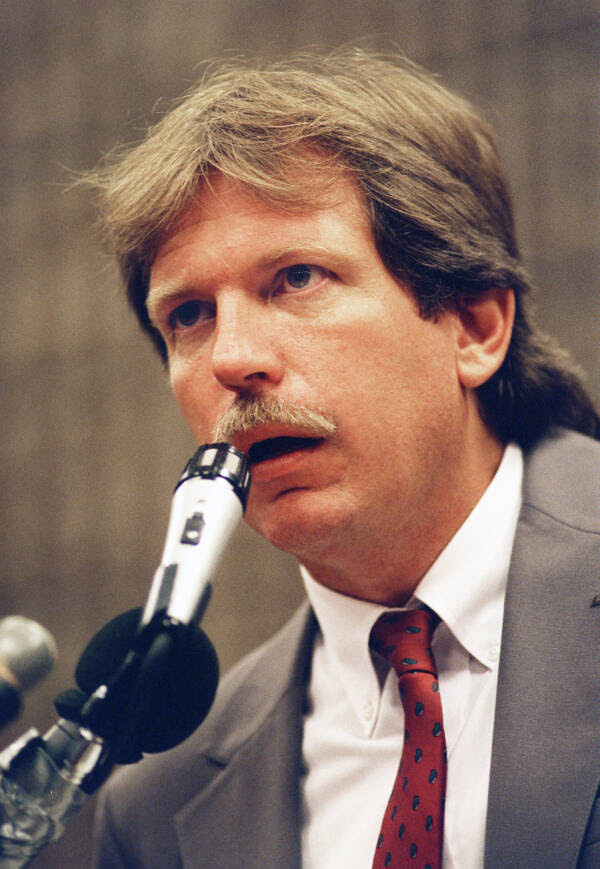
Scott J. Ferrell/Congressional Quarterly/Getty ImagesGary Webb speaking at the Congressional Black Caucus Foundation Annual Legislative Conference. He participated in a panel discussion called, “Connections, Coverage, and Casualties: The Continuing Story of the CIA and Drugs.” Sept. 11, 1997.
On the other hand, more prominent newspapers couldn’t believe that a small-time newspaper had scooped them in such a groundbreaking story. Webb faced an onslaught of reports from the New York Times, the Washington Post, and especially the Los Angeles Times that sought to discredit him — and it worked.
The CIA, amid a public relations “nightmare,” broke its policy of not commenting on any individual’s agency affiliation and denied Webb’s story entirely.
Facing intense pressure from the biggest names in media, Webb’s own editor-in-chief rescinded support for his story.
Gary Webb’s career was ruined, and in 2004 he ended it all for good with two .38-caliber bullets to the head.
Here’s how Webb’s groundbreaking story propelled him to the national stage — and spelled his doom.
Gary Webb’s “Dark Alliance”
Webb’s “dark alliance” consisted of a group of rebels trying to overthrow the socialist government of Nicaragua. These Contras were funded by a Southern California drug ring and backed by the CIA.
“For the better part of a decade, a San Francisco Bay Area drug ring sold tons of cocaine to the Crips and Bloods street gangs of Los Angeles and funneled millions in drug profits to an arm of the contra guerrillas of Nicaragua run by the Central Intelligence Agency.”
Gary Webb, August 1996Let’s go back to where it all began.
The U.S.-backed dictatorship of Anastasio Somoza in Nicaragua came to an end with the Sandinista Revolution of 1978 and 1979. With no legal recourse to topple the five-person junta that took Somoza’s place, CIA interests had to find alternative means to plant a figurehead of their choosing.
President Ronald Reagan allocated $19.9 million to set up a U.S.-trained paramilitary force of 500 Nicaraguans, what eventually became known as the FDN, or the Fuerza Democrática Nicaragüense (Nicaraguan Democratic Force).
But in order to topple the Sandanistas, the FDN, also known as the Contras, needed a lot more weapons — and a lot more money. And to get that money, it needed to look beyond foreign aid.
Soon enough, according to Webb, the FDN set its sights on the poor, black neighborhood of South-Central Los Angeles — and rendered it ground zero of the 1980s crack epidemic.
A C-SPAN segment in which Gary Webb fields a range of questions on investigative hurdles and the journalism world’s response.
Webb’s reporting, focused on a few central players of the L.A. coke scene and the Contra rebels, illustrated how a CIA-backed war in South America devastated black communities in southern California and across the country.
At worst, the CIA orchestrated the drug ring. At best, they knew about it for years and did absolutely nothing to stop it. All the better to serve the country’s economic and political interests abroad.
Shepherding Traffickers To Safety
One of the most notable street-level players was Oscar Danilo Blandón Reyes, a former Nicaraguan bureaucrat-turned-prolific cocaine supplier in California.
From 1981 to 1986, Blandón seemed to be protected by invisible higher-ups that quietly held jurisdiction over local authorities.
After six years of shepherding thousands of kilos of cocaine worth millions of dollars to the black gangs of L.A. during the early 1980s without a single arrest, Blandón was busted on drugs and weapons charges on Oct. 27, 1986.
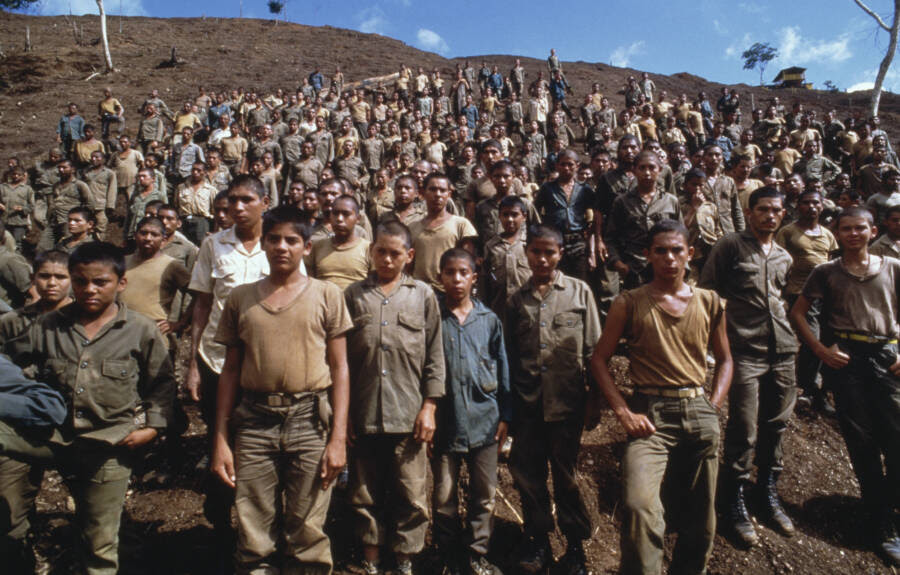
Jason Bleibtreu/Sygma/Getty ImagesTeenage Contra rebels at a training camp in Nicaragua. The Fuerza Democratica Nicaraguauense (FDN) guerrilla group was created in 1981 to oust the country’s socialist government.
In a written statement to obtain a search warrant for Blandón’s sprawling cocaine operation, L.A. County sheriff’s Sergeant Tom Gordon confirmed that local drug agents knew about Blandón’s involvement with the CIA-backed Contras — all the way back in the mid-1980s:
“Danilo Blandon is in charge of a sophisticated cocaine smuggling and distribution organization operating in Southern California… The monies gained from the sales of cocaine are transported to Florida and laundered through Orlando Murillo, who is a high-ranking officer of a chain of banks in Florida named Government Securities Corporation. From this bank the monies are filtered to the contra rebels to buy arms in the war in Nicaragua.”
All of this and more was later backed up by Blandón himself, after he became an informant for the DEA and took the stand as the Justice Department’s key witness in a 1996 drug trial.
“There is a saying that the ends justify the means,” said Blandón in his court testimony. “And that’s what Mr. Bermudez [the CIA agent who instructed the FDN] told us in Honduras, OK? So we started raising money for the contra revolution.”

Luis Sinco/Los Angeles Times/Getty ImagesDonald Shorts, a mechanic and resident of Watts, blamed the crack epidemic that washed over South-Central Los Angeles on the complicity of the CIA and the lack of employment opportunities for black youth.
Meanwhile, Blandón testified that his drug ring sold close to one ton of cocaine in the U.S. in 1981 alone. In the following years, as more and more Americans became hooked on crack, that figure skyrocketed.
While he wasn’t sure how much of that money went to the CIA, he said that “whatever we were running in L.A., the profit was going for the contra revolution.”
Blandón confessed to crimes that would have meant life in prison for the average dealer, but instead he spent just 28 months in prison, followed by unsupervised probation. “He has been extraordinarily helpful,” said O’Neale to Blandón’s judge while arguing for his release.
The DOJ proceeded to pay him more than $166,000 in the two years after his 1994 release, for his services as an informant for the U.S. government.
Even Blandón’s lawyer, Bradley Brunon, was convinced of Blandón’s alliance with the world’s most powerful intelligence agency.

Tom Landers/The Boston Globe/Getty ImagesProtestors march outside of the CIA’s Boston offices in the middle of winter to demonstrate against the war in Nicaragua. March 2, 1986.
Brunon said that his client never specifically claimed he was selling cocaine for the CIA, but figured as much from the “atmosphere of CIA and clandestine activities” that surfaced during that time.
That big aircraft came largely from El Salvador, according to U.S. General Accounting Office records.
When DEA agent Celerino Castillo III, who was assigned to El Salvador, heard that the Contras were flying cocaine out of a Salvadoran airport and into the U.S., he began logging flights — including flight numbers and pilot names.
“Was he involved with the CIA? Probably. Was he involved in drugs? Most definitely… Were those two things involved with each other? They’ve never said that, obviously. They’ve never admitted that. But I don’t know where these guys get these big aircraft.”
Bradley Brunon, attorney for Oscar Danilo Blandon ReyesHe sent his information to DEA headquarters in the 1980s, but the only response he got was an internal investigation — not of these flights, but of him. He retired in 1991.
“Basically, the bottom line is it was a covert operation and they [DEA officials] were covering it up,” he told Webb. “You can’t get any simpler than that. It was a cover-up.”
A cover-up with devastating consequences. L.A.’s drug lords had come up with a way to make cocaine cheaper and more potent: cooking it into “crack.” And nobody spread the plague of crack as far and wide as Ricky Donnell “Freeway Rick” Ross.
Freeway Rick And South-Central: Crack Capital Of The World
Gary Webb believed that if Blandón, Meneses, and Rick Ross had worked in any other legal line of business, they “would have been hailed as geniuses of marketing.”

Ray Tamarra/GC Images“Freeway” Rick Ross didn’t know how to read until he taught himself at the age of 28 while imprisoned. It was as a direct result that he noticed a flaw in his conviction, which subsequently led to a successful appeal. June 24, 2015.New York City, New York.
According to Esquire, Ross raked in more than $900 million in the 1980s, with a profit encroaching on $300 million (nearly $1 billion in today’s dollars).
His empire ultimately grew to 42 U.S. cities, but it all came tumbling down after Blandón, his main supplier, turned into a confidential informant.
Webb first heard of Ross while researching asset forfeitures in 1993 and found he was “one of the biggest crack dealers in L.A.,” he recalled in his 1998 book. He then discovered that Blandón was the CI that got Ross imprisoned in 1996.
When Webb realized that Blandón — the fund-raiser for the Contras — sold cocaine to Ross, South-Central’s biggest crack dealer, he had to speak to him. He eventually got Ross on the phone, and asked him what he knew about Blandón. Ross had only known him as Danilo, and figured he was regular guy with an entrepreneurial streak.
A C-SPAN segment in which Gary Webb fields a range of questions on investigative hurdles and the journalism world’s response.
“He was almost like a godfather to me,” said Ross. “He’s the one who got me going. He was [my main source]. Everybody I knew, I knew through him. So really, he could be considered as my only source. In a sense, he was.”
Ross confirmed to Webb that he met Blandón in 1981 or 1982, right around the time when Blandón started dealing drugs. Webb spent hours talking with Ross at the Metropolitan Correctional Center in San Diego, where he found that Ross knew nothing about Blandón’s past at all.
He didn’t even know who the Contras were, or who was financing their war. Blandón was just a smooth-talking guy with an unending stash of cheap cocaine.
When Webb told Ross that Blandón had worked for the Contras, selling drugs to finance their weapons supplies, Ross was flabbergasted.
“And they put me in jail? I’d say that was some fucked up shit there,” said Ross. “They say I sold dope all over, but man, I know he done sold ten times more dope than me… He’s been working for the government the whole damn time.”
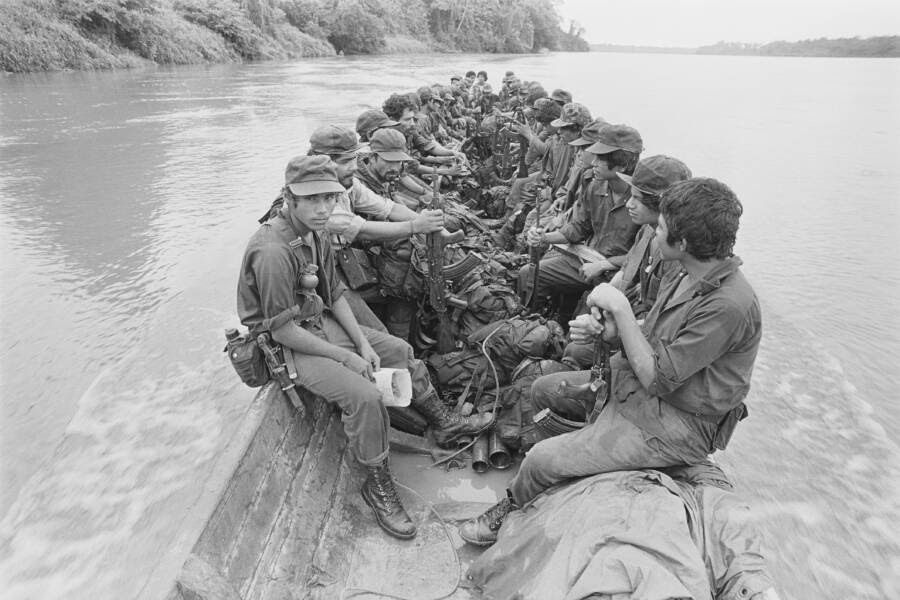
Bill Gentile/Corbis/Getty ImagesContra forces move down San Juan River (which separates Costa Rica from Nicaragua). “Freeway” Rick Ross said he was entirely unaware his rampant drug dealing in L.A. was funding this group of anti-Sandinistas in Central America.
Ross learned how to read at the age of 28 while imprisoned and found a legal loophole that set him free. The three-strikes law had been falsely applied, which led to a sentence reduction of 20 years after he appealed. He was released in 2009, and has since spread his story far and wide.
Problems With Gary Webb’s Reporting
To be sure, there were serious problems with Webb’s writing and reporting. As Peter Kornbluh laid out in the Columbia Journalism Review in 1997, Webb presented some powerful evidence that two FDN-affiliated Nicaraguans became prolific drug smugglers in the 1980s U.S.
But when it came to the most enticing bit of the story and the part that most animated and enraged the American public — that these smugglers were linked to the CIA — there was, on a closer reading, very little direct evidence.
In all 20,000 words of “Dark Alliance,” Gary Webb never claimed outright that the CIA knew about the Contras’ drug scheme, but he certainly implied as much.

Bob Berg/Getty ImagesThe CIA denied Gary Webb’s reporting, while his fellow journalists nitpicked Webb’s faults while failing to follow up on his claims. Los Angeles. March 1999.
Kornbluh writes: “Speculative passages like ‘Freeway Rick had no idea just how “plugged” his erudite cocaine broker [Blandón] was. He didn’t know about Norwin Meneses or the CIA,’ were clearly intended to imply CIA involvement.”
It was clear that Blandón and Meneses had connections to the FDN, and it was a known fact that the FDN was backed by the CIA, but Webb failed to make a compelling case for Blandón’s and Meneses’ direct connection to the CIA.
“To some this may seem a trivial distinction,” Kornbluh writes. Rep. Maxine Waters said at the time that “it doesn’t make any difference whether [the CIA] delivered the kilo themselves, or they turned their heads while somebody else delivered it, they are just as guilty.”
But, in the words of Kornbluh, “the articles did not even address the likelihood that CIA officials in charge would have known about these drug operations.”
Failing to do so — and crafting the whole piece as a one-sided, damning report without presenting contradictory evidence — was a major oversight by Webb and his editors, and made his exposé wide open to criticism.

Mike Nelson/AFP/Getty ImagesU.S. Rep. Maxine Waters, representing a majority-minority district in Los Angeles, holds up an apparent package of cocaine for the press. She pushed the government to investigate Webb’s findings. Oct. 7, 1996.
The Major Papers Poke Holes
And that criticism came like a tidal wave — after a brief blackout.
While some Bay Area papers and talk radio, particularly black talk radio, pounced on the story, the country’s major newspapers and TV news networks remained mostly silent.
“Dark Alliance” was breaking internet records, boasting 1.3 million site visits daily — a remarkable feat at a time when only about 20 million Americans had home internet access. And all the while, at least for the first month after the series’ release, America’s most popular news sources were mum.
Then, on October 4, the Washington Post published a scathing “investigation” declaring that “available information does not support the conclusion that the CIA-backed contras — or Nicaraguans in general — played a major role in the emergence of crack as a narcotic in widespread use across the United States.” Even though Webb’s article focused on southern California, not the U.S. in general.
A C-SPAN segment in which Gary Webb fields a range of questions on investigative hurdles and the journalism world’s response.
A C-SPAN segment in which Gary Webb fields a range of questions on investigative hurdles and the journalism world’s response.
A couple weeks later, the New York Times released it’s declaration: that there was “scant proof” for Webb’s main contentions.
But the greatest criticism came from the Los Angeles Times, which assembled a 17-person team; one member remembered it being called the “get Gary Webb team.” On October 20, the L.A. paper — incensed that it had been scooped in its own backyard — began publishing a three-part series of its own.
Like the other major papers, the Times relied on the very hyperbole and selective reporting in its own takedown series that it criticized Webb of committing.
Reporter Jesse Katz, who two years prior had written a profile of “Freeway Rick” Ross describing him as “a criminal mastermind…most responsible for flooding Los Angeles streets with mass-marketed cocaine” did a complete about face and characterized Ross as just one small player in a sprawling landscape of L.A. crack dealers. “How the crack epidemic reached that extreme, on some level, had nothing to do with Ross,” he wrote.
All three papers ignored evidence already out there — including a mostly ignored Associate Press report from 1985 and a House Subcommittee from 1989 that found that “U.S. officials involved in Central America failed to address the drug issue for fear of jeopardizing the war efforts against Nicaragua.”
According to a CIA article that was finally released in 2014 titled “Managing a Nightmare: CIA Public Affairs and the Drug Conspiracy Story,” the media’s penchant for jealousy and cannibalism worked in the agency’s favor. Rather than mount a stealth public relations campaign, all the agency had to do was provide reporters with comments of denial. The reporters didn’t need to be convinced to go after Webb, they did it gladly.
“Clearly, there was room to advance the contra/drug/CIA story rather than simply denounce it,” Kornbluh wrote. Instead of investigating the questions Gary Webb raised and provide crucial information to an enraged public that had been devastated by crack addiction and the War on Drugs, the “big three” papers made it their main goal to discredit Webb.
The “Dark Alliance” saga began as a matter of, “Look what horrible things the government may be implicated in.” But it turned into, “Look at what a sloppy journalist Gary Webb is.”
Steve Weinberg of The Baltimore Sun was one of the few who rationally defended Webb’s supposed guesswork.
“[Webb] took the story where it seemed to lead — to the door of U.S. national security and drug enforcement agencies. Even if Webb overreached in a few paragraphs — based on my careful reading, I would say his overreaching was limited, if it occurred at all — he still had a compelling, significant investigation to publish.”
Kill The Messenger: The Death Of Gary Webb
Whatever the desired effect was — To vindicate their own journalists for not covering the groundbreaking story first? To assure black Americans that all was fine and the CIA really did have their backs? — the biggest impact it had was on Gary Webb’s life.
Jerry Ceppos, then the executive editor of the Mercury News, wrote an open letter to readers in May 2017 rescinding support for Webb’s reporting and listing the editorial flaws in “Dark Alliance.”
The news media took his apology and put it on blast. Webb, who just a few years prior had won a Pulitzer Prize, was reassigned to the Cupertino desk, where his thirst for investigative reporting went depressingly unquenched. He resigned from the paper by the end of the year, and his reputation was so tarnished that he couldn’t get a good job anywhere else.
He was forced to sell his home in 2004, but on moving day he shot himself in the head with two .38-caliber bullets.
Webb’s rise and fall was most recently dramatized in the 2014 movie Kill the Messenger starring Jeremy Renner as Webb, based on journalist Nick Schou’s titular book.
The official trailer for Michael Cuesta’s 2014 film Kill the Messenger.“Once you take away a journalist’s credibility, that’s all they have,” said Schou. “He was never able to recover from that.”
Webb’s reporting ultimately panned out: We now know that the U.S. government was complicit in drug smuggling in order to support its foreign policy interests. It was a phenomenon that, combined with the “War on Drugs,” devastated large and mostly black swaths of Americans for generations.
Still, the journalism world’s response to Webb’s “Dark Alliance” spelled his doom.
“It’s impossible to view what happened to him without understanding the death of his career as a result of this story,” said Schou. “It was really the central defining event of his career and of his life.”
After reading about Gary Webb exposing the CIA’s potential complicity in L.A.’s crack epidemic, learn all about Nellie Bly, the pioneering investigative journalist who faked insanity to expose the inner workings of a Victorian-era insane asylum. Then take a look at 37 startling photos of 1980s New York City, when crack was king.


